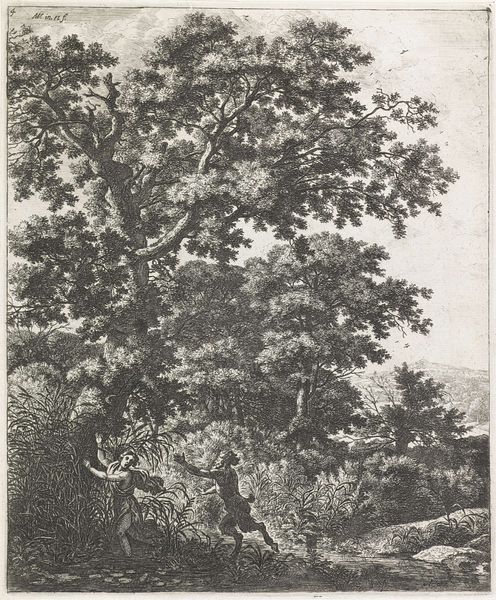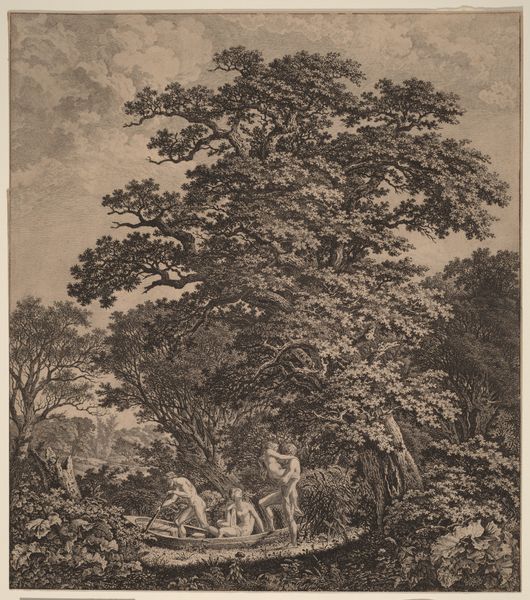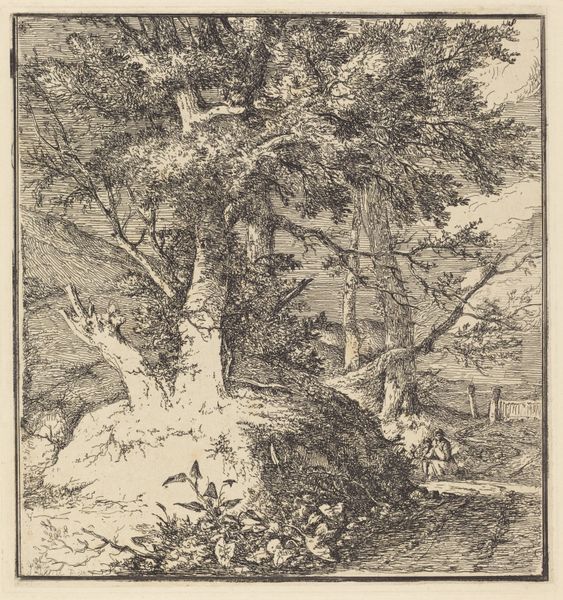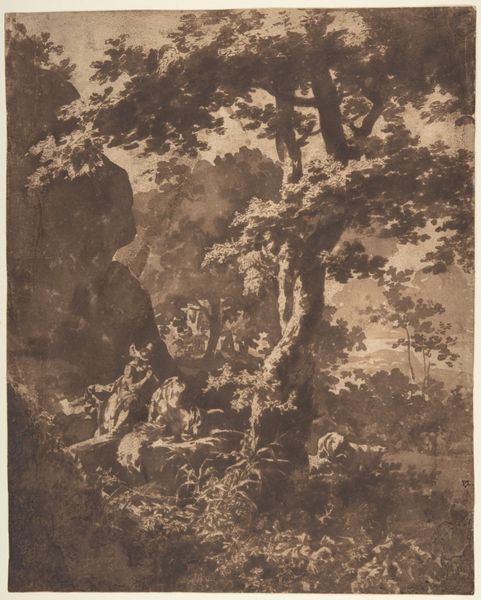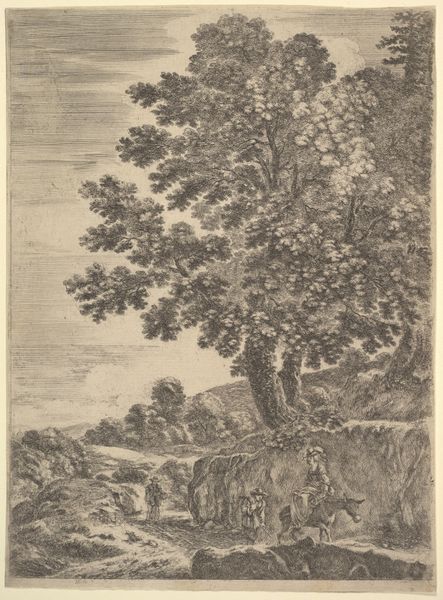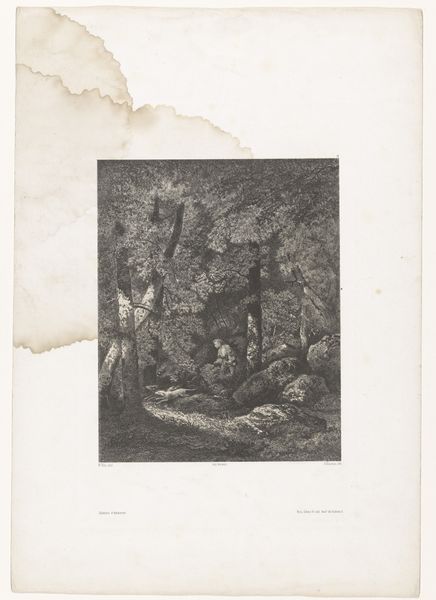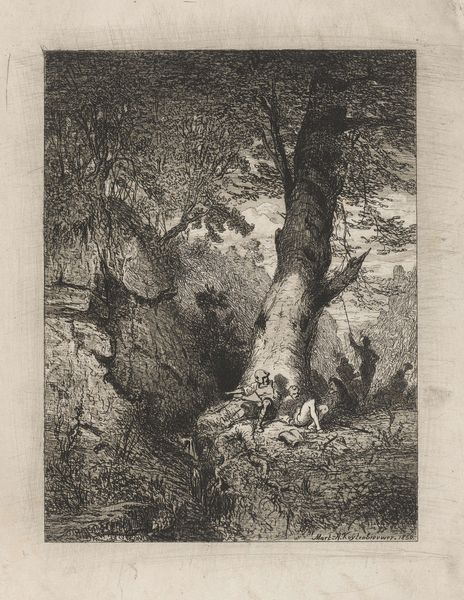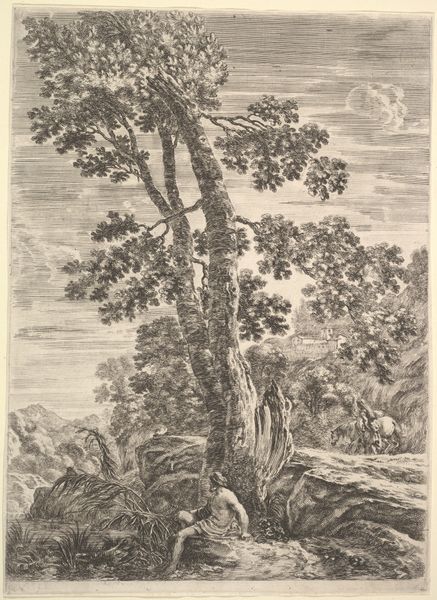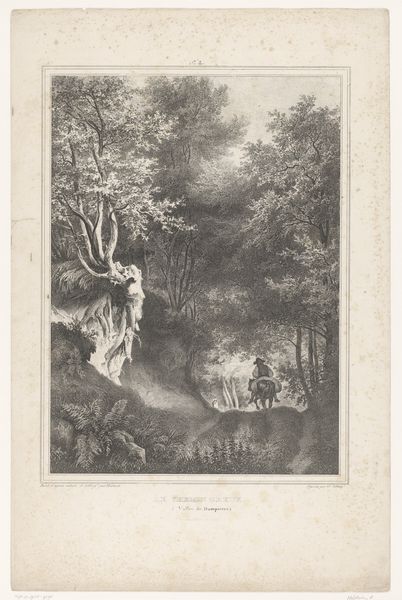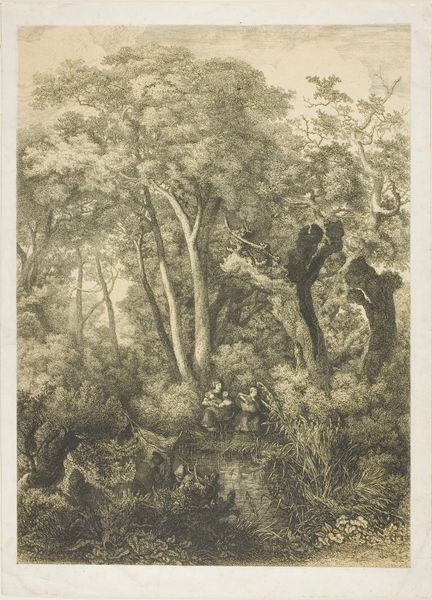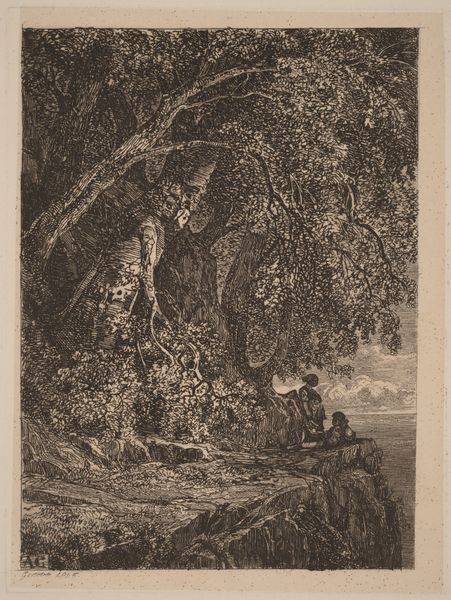
print, etching
# print
#
etching
#
landscape
#
figuration
#
romanticism
Dimensions: plate: 26.4 x 17.8 cm (10 3/8 x 7 in.) sheet: 28.6 x 19.9 cm (11 1/4 x 7 13/16 in.)
Copyright: National Gallery of Art: CC0 1.0
Curator: Here we have Carl Wilhelm Kolbe’s etching, “Satyr and Nymph in a Swamp,” dating from around the 1790s. Editor: The initial impression is one of overwhelming darkness and a hidden narrative; it’s incredibly textural, like stepping into a dense, mysterious forest. Curator: Kolbe masterfully uses the etching technique to create that density. It's important to consider how Romanticism was grappling with themes of the sublime, reflecting both the awe-inspiring and terrifying aspects of nature. We could consider the artwork to be symbolic of contemporary understandings and misrepresentations of female pleasure within the heteropatriarchal imaginary? Editor: Absolutely, there’s a potent symbolic layer here. Satyrs themselves are loaded figures, representing primal urges and a blurring of the lines between humanity and animal instinct. The swamp evokes a place of hidden secrets, a liminal zone where transformation occurs. There is also an alchemical sense of chaos as a foundation for creation. Curator: Right, and the figure of the nymph, often depicted as vulnerable or passive, invites questions about gendered power dynamics within these Romantic narratives. Are we witnessing a scene of potential violence, or is there something more nuanced at play here? Editor: Perhaps. Thinking about archetypes, though, these figures are not simply characters but embody enduring symbolic concepts. Nymphs can also represent the untamed aspects of female sexuality, linked to nature and intuition, resisting complete male domination. I see these beings struggling against their social bindings and reaching towards transformation within the shadows. Curator: I appreciate that you emphasize resistance within the dynamics on display, however this is likely also wishful projection, the figures were, for Kolbe, purely fantasy images removed from lived experience. The image can reveal to us a narrative of fantasy as an exercise of dominance rather than imagination as pure expression of joy. Editor: Ultimately, the viewer must acknowledge and explore the complicated readings based on their personal biases. Kolbe provides an intentionally dense playground, and this etching acts as an artifact to further our current discussions. Curator: Indeed, analyzing historical representations through a contemporary lens reveals how certain narratives persist. Understanding that past—its anxieties, desires, and power structures—is necessary if we are to push forward today. Editor: Exactly. These ancient figures are more reflective of who we are today and in that sense this is, always, a current scene.
Comments
No comments
Be the first to comment and join the conversation on the ultimate creative platform.
